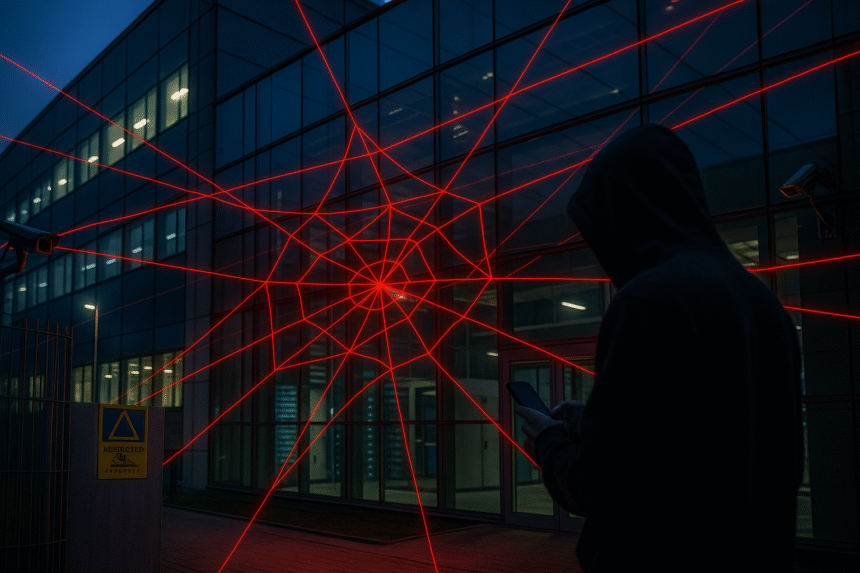Proxy Adversaries, Strategic Shock
NoName057(16) does not emerge from digital chaos. It operates as a manufactured proxy weapon. Its attacks are “not mere noise, but strategic signals in the larger hybrid war destabilising the continent”[1]. The pattern is persistent. European digital infrastructure now faces constant, coordinated pressure—technically, institutionally, and narratively.

1. The 2025 Threatscape and NoName057(16)’s Role
European cyber attacks have reached record highs in 2025. NoName057(16) stands at the centre of this escalation. The group fuses disruptive technical operations with information warfare. Open-source threat intelligence reveals that their persistent DDoS campaigns target critical moments—elections, sanctions, and major geopolitical shifts[1]. By design, NoName057(16) times these campaigns to maximise disruption.
Their targeting is never random. They repeatedly attack countries supporting Ukraine, as well as institutions that challenge Russian interests[2]. Thus, hacktivism has shifted from amateur disruption to coordinated, strategic warfare.

2. Actor Typology: Structure, Tactics, and Strategic Function
2.1 Organisational Logic
“NoName057(16) operates a highly decentralised yet disciplined model, leveraging both volunteer ‘hacktivists’ and likely core members with advanced technical capability. This hybrid structure enables both scalability and plausible deniability—a hallmark of contemporary Russian cyber strategy”[2]. This structure allows the group to rapidly expand, recruit, and operate globally while maintaining state protection and ambiguity.
Public reporting notes their “high OPSEC awareness”[3]. Operational security is never an afterthought. Telegram presence, rapid target rotation, and aggressive narrative control all contribute to agility and resilience. The group times campaigns to coincide with sanctions, battlefield developments, or state-level events. Every campaign is designed to achieve maximum informational impact.
2.2 Tactics and Tooling
NoName057(16) focuses on effect, not novelty. Their arsenal consists primarily of application- and network-layer DDoS attacks. Volunteers—motivated by reputation, ideology, and cryptocurrency—use both commodity and proprietary tools such as DDoSia[1]. “NoName057(16) demonstrates a clear evolution from amateur hacktivism to state-enabled, narrative warfare”[1].
“Its attacks are not mere noise, but strategic signals in the larger hybrid war destabilising the continent”[1].
Each attack is not just a technical event. Telegram campaigns, media leaks, and social engineering amplify their impact. As a result, the group routinely shifts public discourse, disrupts parliamentary sessions, and triggers incident responses across Europe[2][3].
2.3 Synchronised Narrative Operations
“NoName057(16) marks the maturation of ‘hacktivism’ into a proxy warfare asset”[3].
NoName057(16) excels at integrating technical disruption with narrative warfare. Their Telegram channels openly boast of successes. “Victory” declarations, memes, and coordinated releases sync with Russian state disinformation[1][3]. Every technical disruption becomes a psychological operation. The group crafts each attack to erode European public trust and amplify the spectacle of vulnerability.

3. Impact Analysis: Technical, Institutional, Narrative
Hundreds of cyber incidents have been publicly recorded since the group’s emergence. NoName057(16) has caused significant outages in government, finance, transportation, and media sectors[2]. For example, Radware notes,
“The continued effectiveness of DDoS attacks against public services reveals persistent weaknesses in European digital infrastructure, particularly in the realms of cloud-based resilience and rapid incident response”[2].
The immediate technical effects are only part of the story. Psychological and political effects accumulate with each new campaign. Every successful attack erodes public trust, increases uncertainty, and generates political noise. Narrative warfare is inseparable from technical aggression. Public confidence declines while adversaries leverage confusion.

4. Countermeasures: Lessons and Gaps
4.1 Technical and Organisational Defence
Effective defence demands more than technology. While scalable DDoS mitigation, intelligence sharing, and rapid response drills do help, they require genuine cross-border coordination and clear communication[2][3]. Where oversight fragments, NoName057(16) exploits the resulting policy and operational gaps. Thus, institutions must ensure disciplined, collaborative cyber defence.
4.2 Information Operations and Policy
Technical resilience is only part of the solution. European governments and institutions must publicly expose the structure and strategy of proxy threat actors. Only with open, transparent attribution and narrative control can defenders inoculate the public against strategic manipulation. The “grassroots hacktivist” myth demands an aggressive, clear rebuttal at every institutional level.

5. The Next Phase of Digital Conflict
Hybrid Threats and the End of Innocence
NoName057(16) demonstrates that hybrid warfare has matured. Scalable technical attacks are inseparable from information and psychological campaigns. The threat is ongoing and evolving. Only by combining operational discipline, technical adaptation, and transparent narrative control can European democracies maintain sovereignty and public trust.
“NoName057(16) marks the maturation of ‘hacktivism’ into a proxy warfare asset”[3].
Resilience will require more than technical upgrades. It demands a new institutional mindset—agile, transparent, and ready for an era where information and infrastructure are contested at every level.
Stay Informed—Arm Yourself with Intelligence
Support Intelligence Journalism at the Front
Frontline Europa continues to document and monitor hybrid threat actors. Subscribe to our bulletins for actionable insights. Support independent, evidence-based reporting on Patreon.






